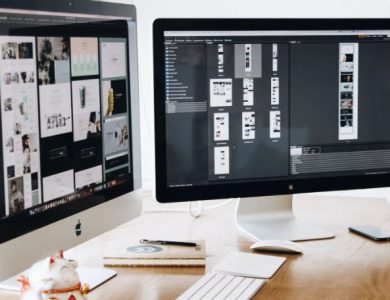When you think about web design, creativity probably comes to mind first—color palettes, layout aesthetics, typography choices. But there’s another element working silently in the background, one that’s just as vital: logic. Whether you’re crafting a wireframe, building a clickable prototype, or outlining user flows, logic plays a central role in shaping how your designs function and feel.
If you’re diving into web prototyping, understanding how logic is applied can drastically improve your workflow, reduce errors, and help you make design choices grounded in user behavior and technical feasibility. Let’s unpack how you can leverage logical thinking to maximize the effectiveness of web design and development packages.
Understanding Logic in the Context of Prototyping
Before you open your favorite prototyping tool, take a step back and define what logic means in this context. Here, logic refers to the structured thought processes you apply to the design. It involves organizing information, planning user interactions, predicting outcomes, and ensuring consistency throughout the user experience.
Logic ensures your prototype doesn’t just look good—it works well. A button leads where it should. A form gives feedback when something’s wrong. Navigation reflects a clear hierarchy. You’re building a blueprint of a future product, and just like with a building, that blueprint must be structurally sound.
Defining User Goals and Use Cases Logically
Start by identifying your target audience and defining their main goals. Logic helps you think like the user: “If I want to find a product, where would I expect to go?” or “If I forget my password, what steps do I take to reset it?”
Create use case scenarios before jumping into visual design. For example, map out:
- A new user creating an account
- A returning user navigating to a specific product
- An admin managing the backend
Using logic, you outline steps and decisions the user might make. This approach helps in building interactive flows that anticipate needs and eliminate confusion.
Logical Structuring of Site Architecture
Effective information architecture is impossible without logic. Think in terms of hierarchy and categorization. Begin by logically grouping related content and functions. If you’re designing for an online bookstore, group categories such as “Fiction,” “Non-fiction,” and “Children’s Books” under a main “Browse” menu.
Avoid putting unrelated pages next to each other. A clear, logical structure makes your prototype more intuitive and easier to navigate during usability testing.
Your prototype should reflect:
- Clear paths from general to specific information
- Minimal dead-ends (pages without navigation options)
- Consistent patterns for actions like “Add to Cart” or “Read More”
Conditional Logic and Interactive Elements
Many prototyping tools now support conditional logic, which lets you simulate real user interactions without writing code. Think of it as “if this, then that” logic. For example:
- If a user clicks “Login,” show a login form
- If the email field is empty and the user clicks “Submit,” show an error message
- If a product is added to the cart, update the cart icon with a number badge
These micro-interactions are powered by logic. They’re not just for realism—they’re for testing assumptions. When stakeholders interact with your prototype, logic-based behaviors help them understand how the final product will function.
Logic in User Flow Mapping
User flows are visual representations of the steps a user takes to accomplish a task. You need logic to keep these flows simple, direct, and frictionless. Here’s how you can apply logic:
- Eliminate unnecessary steps (users shouldn’t have to click five times to find their cart)
- Use clear decision points (e.g., “Do you have an account?” → Yes/No)
- Ensure paths don’t loop illogically (e.g., avoid taking users back to a page they just came from without purpose)
Prototyping tools like Figma, Adobe XD, and Axure let you create logical flows with clickable hotspots and branching paths. Use these features to visualize and test each decision point before any code is written.
Testing and Refinement with Logical Assumptions
Prototypes are not final products—they’re test beds. Logic enables you to create hypotheses about user behavior. For instance, “Users will prefer using the search bar instead of browsing categories.” You can then design logical flows to test this hypothesis.
During testing:
- Observe where users click first
- Note how quickly they complete tasks
- Record any navigation confusion
If your assumptions were wrong, logic helps you revise. You don’t just change things arbitrarily—you look at the data, reassess your flows, and apply structured reasoning to improve the design.
Cross-Team Collaboration Requires Logical Frameworks
When you present your prototype to developers, clients, or marketing teams, logic becomes your common language. Developers especially rely on logical consistency to understand your vision. For example:
- Are button states clearly defined (normal, hover, active, disabled)?
- Are form validations shown logically?
- Do modals open and close predictably?
A Web Design Company using logical prototypes can easily hand off to development without lengthy explanations. The better your logical flow, the fewer misunderstandings during implementation.
Using Logic to Balance Aesthetics and Functionality
Yes, design is visual—but visuals without logical support fail under real-world usage. Let’s say you design a beautiful landing page. If the call-to-action button is below the fold or unclear, it won’t perform well.
Logic helps you decide:
- Where to place key elements for maximum visibility
- How to guide the eye through layout and spacing
- When to use contrast to highlight priority actions
Use a logical grid system, standard padding, and consistent color schemes. These are not limitations—they’re principles that support creativity with structure.
Preparing for Scalability
A logical prototype isn’t just about the now—it’s about what’s next. Think about how your design will scale:
- Can your menu handle 50 more products?
- Is the layout flexible enough for more content?
- Will your form validation handle edge cases?
By thinking logically during prototyping, you future-proof your work. This is especially important if you’re working with a Web Design Company that plans to iterate and expand on the project in future phases.
Practical Tips for Applying Logic in Prototyping Tools
Here’s how to integrate logical thinking in your daily use of prototyping software:
Label everything: Clearly name layers, frames, and interactions.
Use components: Create reusable logical elements like buttons, cards, and modals.
Create flowcharts: Before designing screens, sketch logical paths on paper or whiteboards.
Simulate states: Use conditional logic to show hover, click, and error states.
Document decisions: Leave notes explaining why you chose certain flows or features.
Final Thoughts
Web prototyping isn’t just an artistic endeavor—it’s a logical one. When you apply structured thinking to your design process, you reduce ambiguity, streamline development, and create user experiences that make sense.
Whether you’re an individual designer or part of a Web Design Company, logical prototyping helps bridge the gap between idea and execution. The next time you open your design tool, bring your creativity—but don’t forget your logic.




